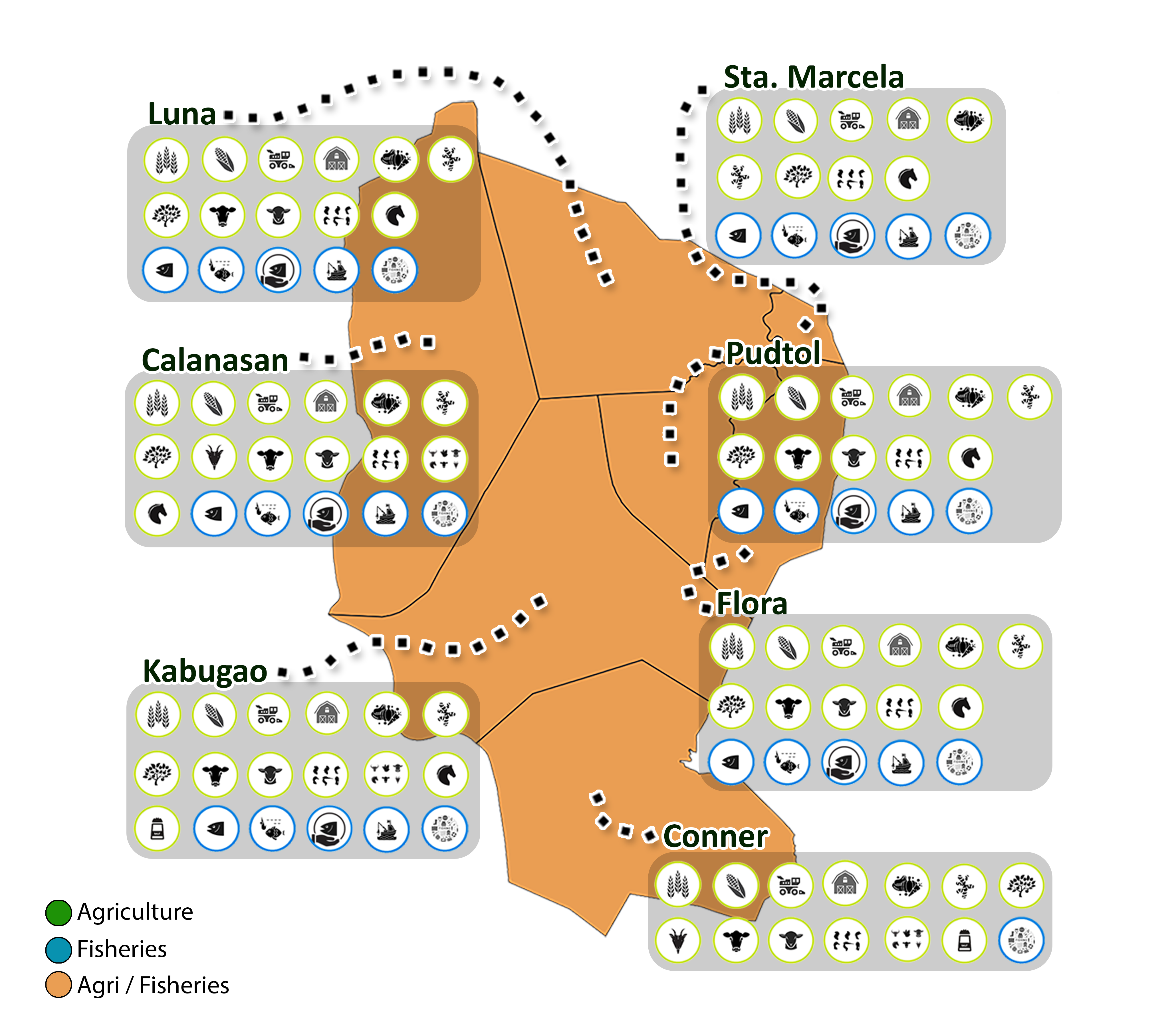
Apayao
The Province of Apayao is one of the six provinces of the CAR. It is located in the northwestern part of Luzon. It is bounded on the East and North by the Province of Cagayan, on the West by the Province of Ilocos Norte and Abra, on the South by the Province of Kalinga.
The province is composed of seven 7 municipalities and 134 barangays and geographically subdivided into two separate regions the Upper and Lower Apayao. Upper Apayao is composed of the upland municipalities of Calanasan, Conner, and Kabugao. Lower Apayao is composed of the lowland municipalities of Luna, Pudtol, Flora, and Sta. Marcela. With an approximate land area of 5,113 square kilometers, Apayao has the largest land area in the entire region sharing almost 26% of the Region’s total land area of 19,748.85 square kilometers.
Calanasan shares the largest land area in the province with a total land area of 1,692.27 square kilometers or a percentage share of 33.10% of the total land area. Meanwhile, the Municipality of Sta. Marcela is the smallest municipality in terms of land area with only 196.10 square kilometers or a percentage share of 3.84% of the total land area.
Agricultural Sector
The province of Apayao produced 11,815 metric tons (MT) of crops during the first semester of 2018. Crop production of the province increased by 8.7% or 944MT compared to the 10,871 MT produced in first semester of 2017.
The top three crops of the province are cassava with 76.3% (9,020.5 MT) contribution to the total production in Apayao, followed by banana with 7.9% or 933.4 MT, and squash fruit with 6.5% or 766.4 MT.
Apayao is the top producer of cassava with 6.1 of the regional cassava production; second top producer of squash fruit 22.2% and third top producer of banana with 9.10%.
Fisheries Sector
According to the data released by PSA in 2019, Apayao ranked 5th among the six provinces in CAR with a contribution of 7.8% or 323.7 MT out of the 4,157.6 MT fishery production in the region. Of this production, 234.9 MT came from inland fisheries while 88.9MT were harvested from 62.1 hectares of aqua farm areas in the province (PSA, 2019).
Major aquaculture commodities include tilapia, carp and catfish. Fisherfolk in the province also cultures freshwater prawn whenever there are available seed stocks from Region 1. For inland capture fisheries, fishermen usually conducts fishing activities in rivers and lakes. Catch composition includes tilapia, carps, freshwater prawn, goby, eel spp. and other freshwater fish species.
Poverty Situation
The recent poverty trends released by the Philippine Statistics Authority (PSA) in 2018, the province of Apayao recorded a decrease in its poverty rate (poverty incidence among families) from 38.1% in 2015 to 16 %.
The poverty threshold of the province in 2018 was estimated at Php 23,135 per capita per annum. This translates to a minimum of Php 9,636 monthly take-home income for a family of five to meet both basic food and non-food needs and be considered not poor in 2018.
Apayao recorded a percentage change of (0.8) from Php 23,310 per capita per annum in 2015. It also has the lowest food threshold per capita per annum with 16,155.
Thereby, the insufficiency of alternative livelihood opportunities to most families has been pointed out as the primary cause of poverty in Apayao.
Project Profile
DA
The DA-SAAD Program of CAR received a budget fund of Php 66,164,000 in 2017 for the four livelihood projects in Apayao, covering 2,017 farmers and 35 associations. The fund was downloaded to th local government unit of Apayao.
For 2018, the released fund is Php 57,009,000 (Php 8,884,000 of the total is for Program Management and Php 3,016,000 for Social Preparation). A total of 2,484 individuals and 19 associations were given assistance for rice, corn, vegetable, fruit, livestock, and poultry production as well as projects for machinery and Sloping Agricultural Land Technology(SALT).
For 2020, SAAD Apayao provided 26 livelihood projects(five for high-value production and 21 for poultry production) to 972 farmers and three groups.
BFAR
The BFAR-SAAD Program of the Cordillera Administrative Region received a budget of Php 15,127,000 in 2017. Two types of project were implemented to five municipalities supporting 1,084 fisherfolk. For 2019, 1,849 fisherfolk benefited from three types of projects worth Php 8,000,000
In 2019, Kalinga and Mountain Province were included in the program implementation. The total fund released for the three (3) covered provinces is Php 40,000,000. The breakdown is as follows: Php 10,000,000 for Apayao, Php 15,000,000 for Kalinga,and Php 15,000,000 for Mountain Province.
From the budget released in the province per year, the management allocated Php 2,000,000 for administrative and training costs.